Red-winged Blackbird flocking at Bosque del Apache
Watching Red-winged Blackbird murmurations in response to Northern Harriers at Bosque del Apache
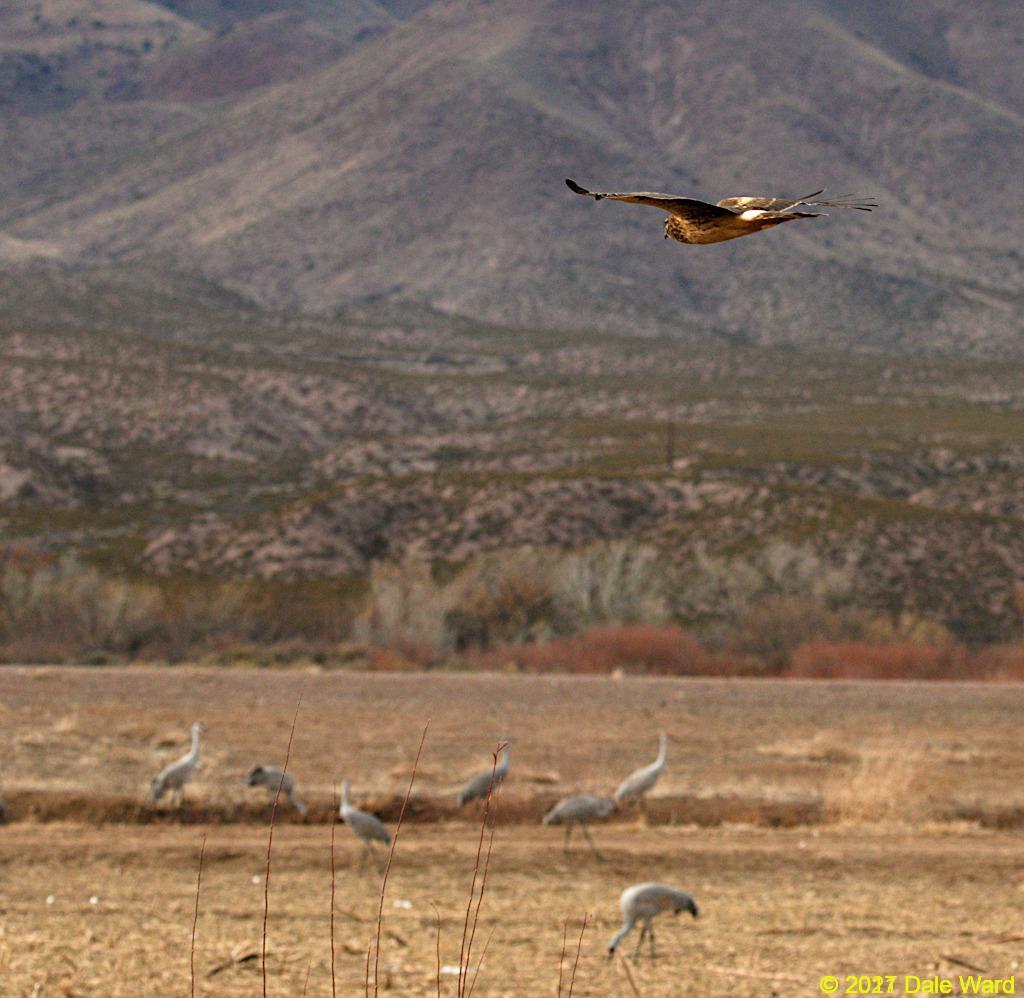 Northern Harrier cruising cut-over cornfield, above Sandhill Cranes.
Northern Harrier cruising cut-over cornfield, above Sandhill Cranes.
One of the most interesting things I saw during my most recent visit to Bosque del Apache was the interaction between Northern Harriers and the flocks of Red-winged Blackbirds.
There were thousands of the Red-winged Blackbirds, and they formed numerous small flocks that were foraging in the dried sunflower stalks at the edges of the cornfields.
When the Blackbirds would take off, each of these small flocks looked like a single organism flying through the air. The shape of the flock would drift and morph, smoke-like, as the birds flew, giving a weird science-fiction look to the flock.
Hawks - Northern Harriers - arrived on the scene and started diving at the individual Blackbird flocks. Usually these hawks hunt alone, but there were so very many Blackbirds that the Hawks seemed to tolerate each other well.
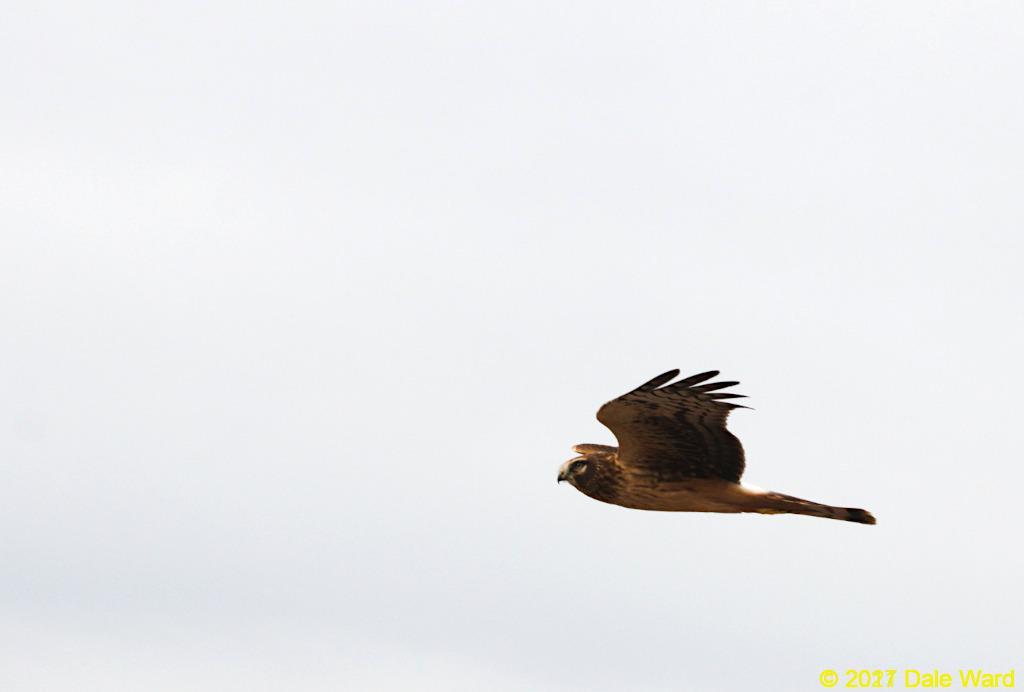 Northern Harrier hunting Blackbird flock.
Northern Harrier hunting Blackbird flock.
At one point there were at least four Northern Harriers diving at the flock.
These small flocks of Blackbirds eventually merged into a single, enormous flock.
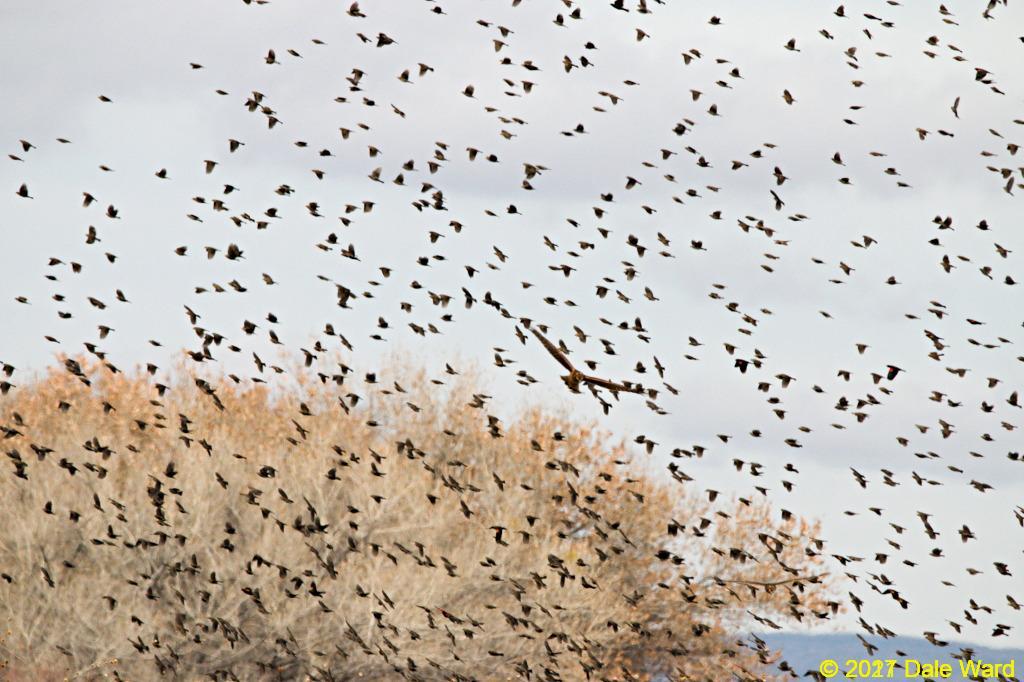 Northern Harrier trying to pick a single bird out of the Red-winged flock
Northern Harrier trying to pick a single bird out of the Red-winged flock
The Harrier’s couldn’t pick out any single Blackbird from the large flock. Rather, the Hawks would dive at the flock, and the flock would swirl and move like smoke around the Hawks.
The Hawks didn’t seem to like to be in the midst of the Blackbirds, maybe afraid to have a high-speed collision.
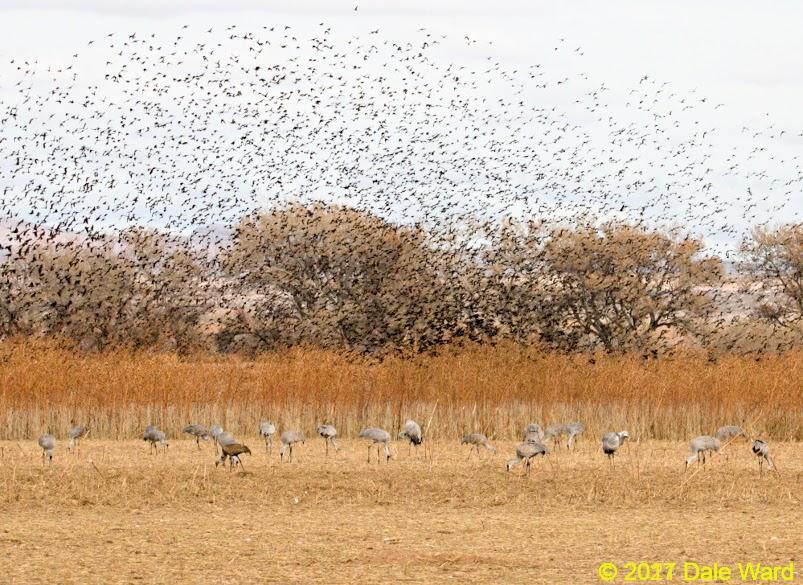 The multiple flocks of Blackbirds merged into a single, enormous flock.
The multiple flocks of Blackbirds merged into a single, enormous flock.
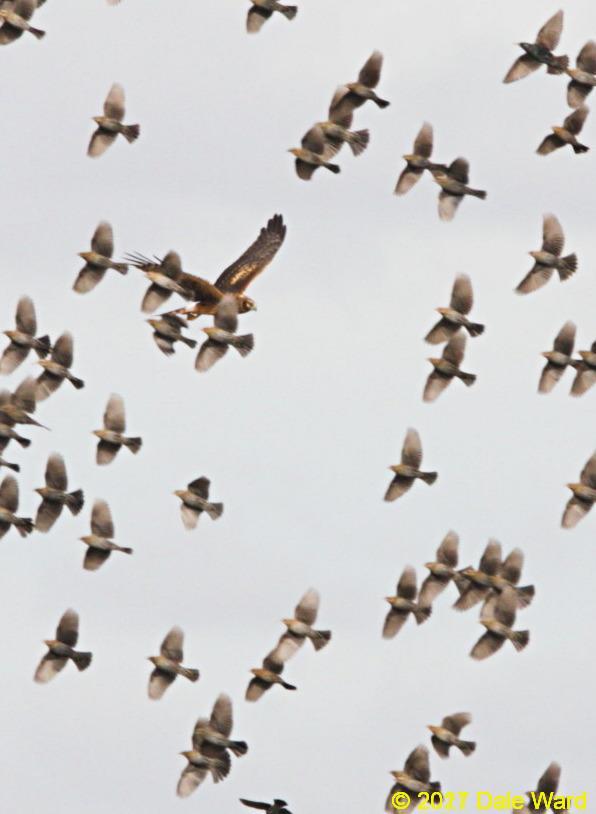 Another Northern Harrier flying at the Red-winged Blackbirds. The Harriers didn’t seem comfortable getting into the middle of the flock. Rather, they’d tentatively dive at the flock’s periphery.
Another Northern Harrier flying at the Red-winged Blackbirds. The Harriers didn’t seem comfortable getting into the middle of the flock. Rather, they’d tentatively dive at the flock’s periphery.
The Harriers seemed to be very aware of each other as they hunted. One hawk’s dive would leave fragments of the large flock in its wake, and the next Hawk would dive at those clumps until the Blackbirds could merge back into the large, main Blackbird flock.
The air was alive with the chattering of the Blackbirds, and the rippling-whoosh roar of their wings.
Eventually, the Hawks gave up, drifted away and the Blackbird flock settled out in the open, onto the mown cornfield. There was an huge number of birds in the flock.
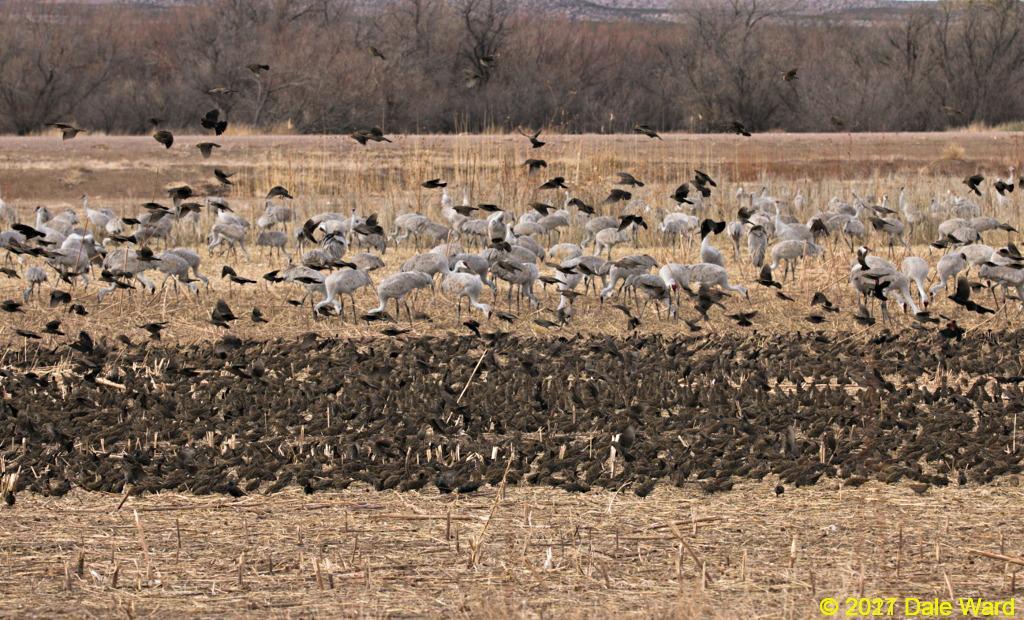 Flock of Redwinged Blackbirds, with Sandhill Cranes in the background.
Flock of Redwinged Blackbirds, with Sandhill Cranes in the background.
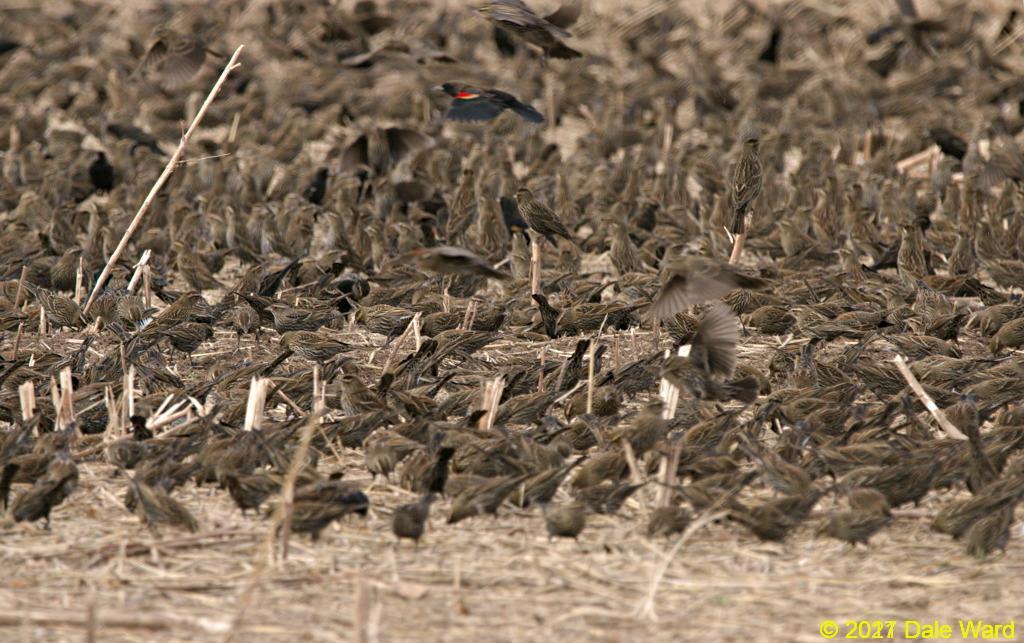 Close-up of Red-winged Blackbird flock.
Close-up of Red-winged Blackbird flock.
Then this enormous flock of birds started creeping back and forth across the cornfield like some sort of sentient oil-spill.
Although the body-bulk of the flock moved across the ground at about walking pace, the individual birds within the body of the flock did not move very much. They mostly were foraging within an area of 1-2 square feet.
The birds that were at the trailing edge of the flock, though, would fly up and over the flock, then land at the ‘head’ of the flock. Since these birds moved in a consistent direction, the net effect was that the body of the flock crept across the cornfield.
That’s how the body of the flock was moving.
 This constant and consistent movement of the birds from the rear to the front of the flock meant that the body of the flock traveled across the ground like a huge black amoeba, even though the individual birds within the flock remained stationary. The birds were moving like a bulldozer’s track would move across the ground.
This constant and consistent movement of the birds from the rear to the front of the flock meant that the body of the flock traveled across the ground like a huge black amoeba, even though the individual birds within the flock remained stationary. The birds were moving like a bulldozer’s track would move across the ground.
Below is a video of the flock moving. In this case, the flock is moving from right to left along the ground.
At the start of the video, you can see the leading edge of flock is on the right of the screen. As more birds land at the head of the flock, the flock ‘creeps’ along towards the left of the screen.
Finally, the trailing edge of the flock comes into view, and you can see those trailing birds taking off and flying to the front of the flock.
Here’s another example. This time the flock is creeping to the right.
The flock stayed in the cornfield for about a 20 minutes, I would estimate. When the body of of the flock reached one end of the field, the birds would take off and fly en masse to another spot on the field.
Here’s another example:
Eventually, the large flock broke up into a lot of smaller flocks, and they flew away.
After the flock had left, two Coopers Hawks flew out of the standing sunflower stocks. One of the Coopers Hawks had a very full crop, so at least somebody successfully caught a Blackbird.